How to Train an Aggressive Dog: A Comprehensive Guide
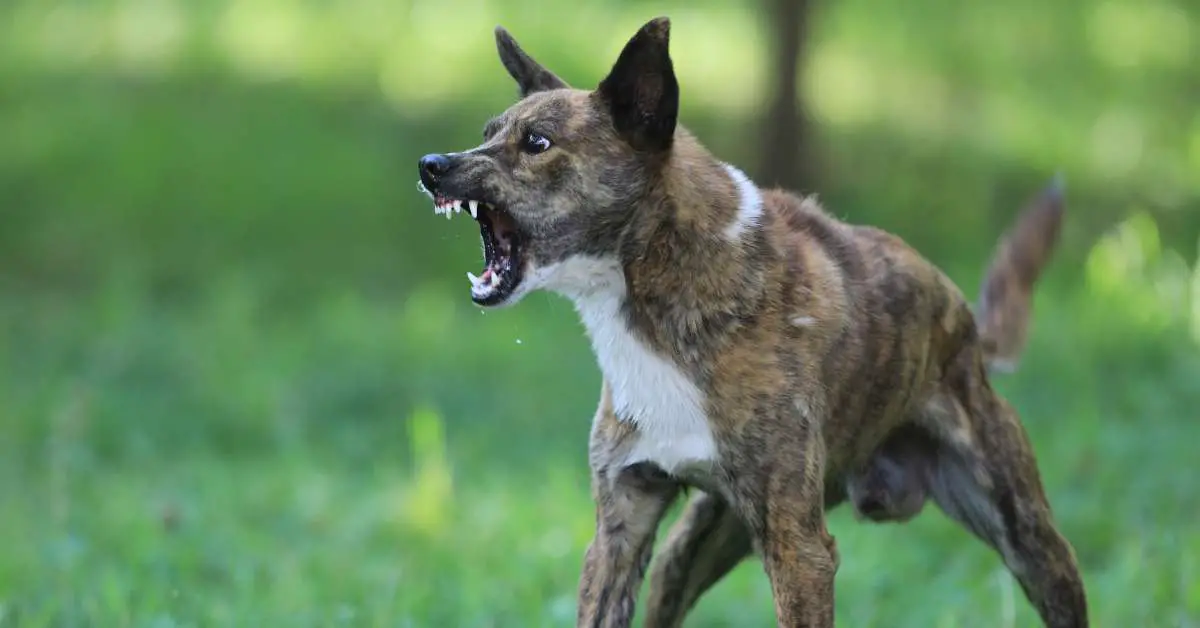
Dealing with an aggressive dog can be a challenging and stressful experience for most dog owners and for any dog owner. Dogs’ aggressive behavior can present itself in various ways, including snarling, barking, lunging at people, or even biting.
It is essential to take action with reactive dogs as soon as possible to correct this behavior and protect your dog and people in the area. In this in-depth tutorial, we will investigate efficient methods that may be used to rehabilitate an aggressive dog and bring harmony back to how your four-legged pal behaves.
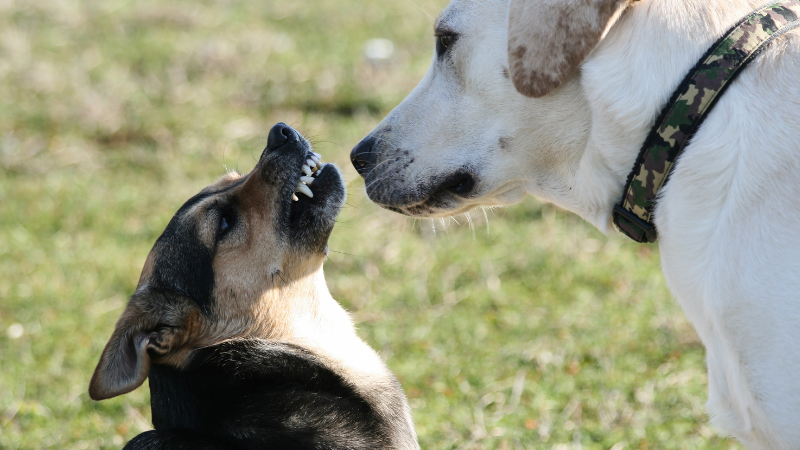
Identifying the Root Causes of Aggression
It is critical to have a solid understanding of the factors contributing to canine aggressive behavior before beginning aggressive dog training tips.
Fear, territoriality, possessiveness territorial aggression, and a lack of socialization are some of the possible root causes of aggressive behavior. When developing an effective training strategy for your dog, it is essential to determine the underlying reasons for the dog’s aggressive behaviors.
Finding the underlying causes of your dog’s behavioral issues might be facilitated by observing his or her actions in various environments and consulting an expert.
Why Do Dogs Behave Aggressively?
Aggression in dogs is a complicated behavior that a wide range of stimuli can trigger. As social creatures, dogs can develop aggressive behavior for various reasons, including fear, anxiety, previous traumatic experiences, a lack of socialization, or inherited predispositions. To successfully handle aggressive behavior in dogs and teach them, it is essential to have a solid understanding of the factors that contribute to aggressive behavior.
If you are a potential dog parent, then here you can find the effect of each dog breed’s personality on its aggressive behavior.
Signs of Aggressive Behavior
Recognizing the warning signals of hostility is essential to dealing with the situation in a timely manner. Some frequent indicators displaying aggressive behavior include growling, barking, snarling, snapping, lunging, or biting.
Both people and other animals might be the targets of your dog biting aggressive behavior. It is extremely important to pay attention to your dog’s body language and any potential triggers that might result in violent outbursts or unwanted behavior.
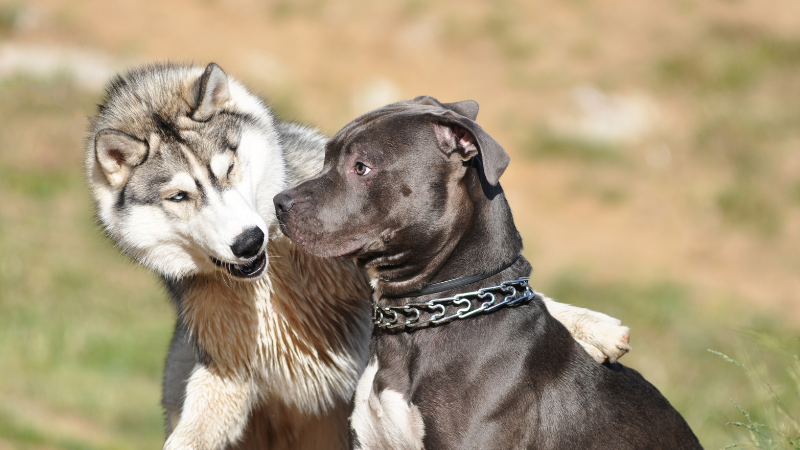
The Step-by-Step Guide to Making Your Dog Less Aggressive
In order to successfully train an aggressive dog, one must take a comprehensive approach that emphasizes both the modification of behavior and the promotion of positive responses. The following is a list of proven methods that can be used to help train a dog to be less aggressive:
Tools to Help with Dog Aggression
During the training sessions, it is possible to achieve a higher level of control by using equipment such as a strong leash, a muzzle with the correct fit, or a head halter.
These tools keep everyone safe while aggressive behavior is being worked on.
Consult Your Local Veterinarian
It is essential to take your dog to the veterinarian for a checkup before beginning any kind of training program with them. Sometimes a dog’s aggressive behavior can be traced back to an underlying medical condition or to physical pain.
Your veterinarian can rule out the possibility of any physical problems and offer helpful advice on how to control aggressive behavior.
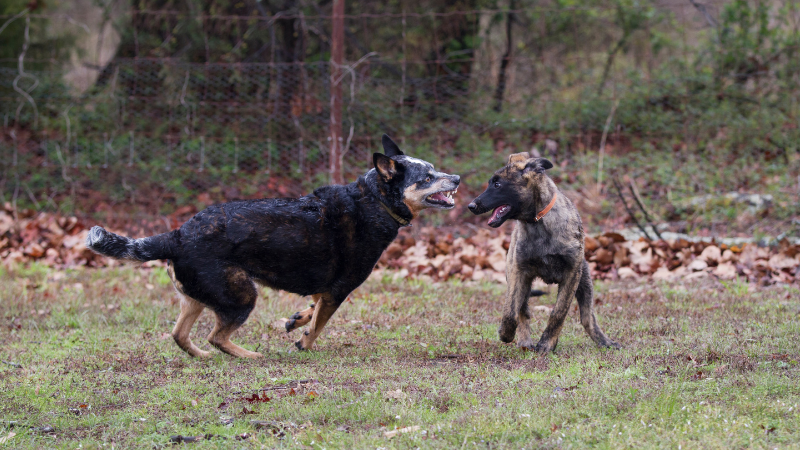
Call in a Professional
The training process can also be substantially improved by enlisting the assistance of a qualified animal behaviorist or professional dog trainer.
These professionals have the expertise and experience to analyze the underlying factors contributing to aggressive behavior, develop a personalized training program for you, and lead you efficiently through the process.
Create a Plan
It is vital to have a well-structured training strategy in order to achieve success. Determine the exact stimuli that cause your dog to act aggressively, and then in a safe setting, introduce your dog to these triggers in a step-by-step manner.
Establishing attainable goals and slicing the training process into digestible chunks can make the experience more positive for you and your dog.
Avoid Punishment
Training techniques that rely on physical or emotional punishment can make an aggressive dog or dangerous behavior even more dangerous and can erode trust between you and your pet. Instead, focus on positive reinforcement tactics.
If your dog displays calm behavior and avoids becoming violent, make sure to praise him and give him some attention as a reward. This constructive association helps reshape their behavior and develops a better link between you and your dog.
Here, you can find the most successful positive training methods to decrease dog aggression.
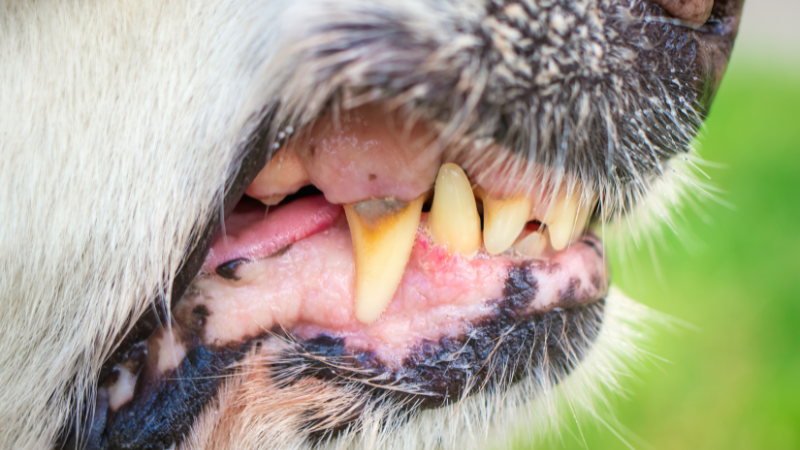
Consider Medication
In certain circumstances, medication may be suggested to aid in managing aggressive behavior.
To evaluate whether or if medication is required and to discuss potential treatment alternatives, it is best to speak with a qualified veterinarian or veterinary behaviorist.
When combined with therapy, medication has the potential to reduce anxious feelings and make it easier to make positive behavioral changes.
Handle Unavoidable Situations
It is important to have a plan in place for situations in which you cannot avoid potential triggers, such as when you will come into contact with people or dogs you are unfamiliar with.
Maintaining a safe distance and employing management techniques such as redirection and focus exercises are effective ways to keep your dog calm and stop him from reacting and acting aggressively.
Consistency is the most important factor when it comes to gradually desensitizing your dog to these situations.
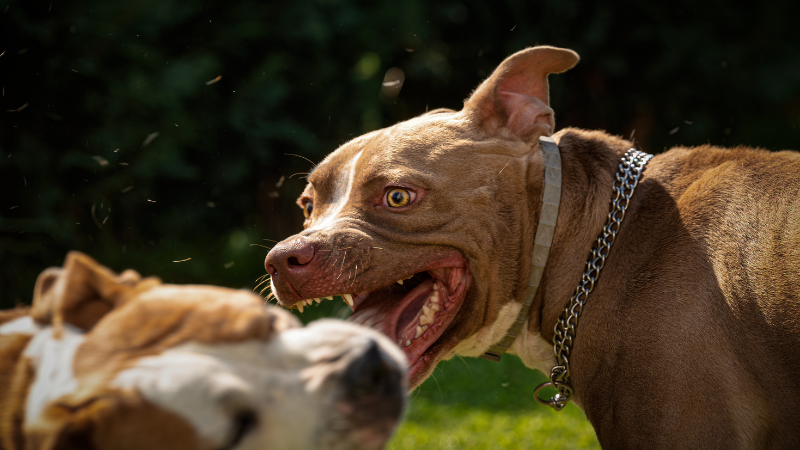
Treats and Patience are Critical to Success
Training aggressive dogs requires time, patience, and consistency over a long period of time.
When your dog exhibits behavior that is not aggressive toward other dogs, animals or people, it is helpful to reinforce positive responses by providing the dog with treats and verbal praise. But, when your dog exhibit aggressive behavior then it is difficult to manage.
Even the smallest of victories should be celebrated, and it is important to be ready for setbacks along the way. You can make significant progress in training your aggressive dog if you are committed and understand what you are doing.
Dog’s behavior is very crucial for pet parents. It is because dog temperament and personality is totally dependent upon its behavior. When the dog’s behavior is good and pleasant from the early age the pet parents and professional dog trainers are easy to manage in future.
Fact: Aggressive behaviors in male dogs is usually easy to handle by professional dog trainer as compared to female dogs.
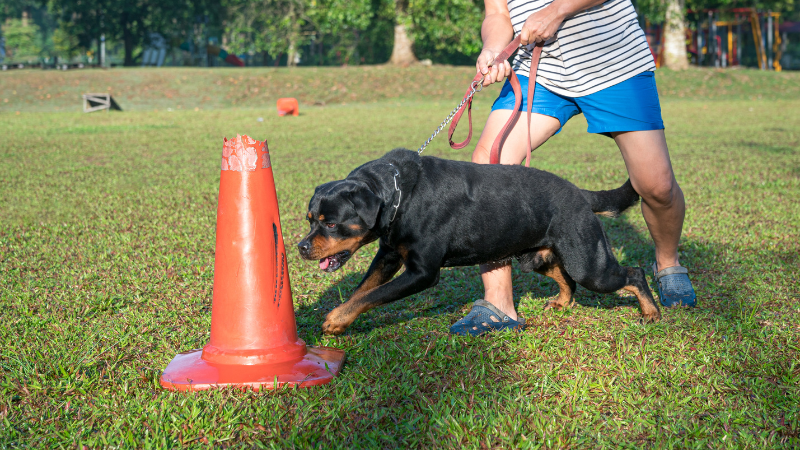
Desensitization and Counterconditioning
Desensitization and counterconditioning are two powerful methods that are frequently utilized together in the process of altering aggressive behavior.
The process of desensitizing entails gradually exposing your dog to the stimuli that cause them to act aggressively in doses that are manageable and under your control.
For instance, if your dog has a history of being hostile toward people they do not know, you may begin by acclimating them to new people from a secure distance and then progressively shorten the distance as they get more comfortable.
The goal of counterconditioning, on the other hand, is to alter the emotional response that your dog has in response to the trigger.
Your dog will be better able to link the trigger, which was previously associated with a bad experience, with a good one if you combine the presence of the trigger with a pleasant stimulus, like treats or play.
This has the potential to help them become less to display aggressive behavior over time and replace it with more appropriate behavior.
Fact: Sex related aggression or possessive aggression are common dog’s triggers or unwanted behaviors usually seen in worst type of dog aggression. These two dog triggers are usually seen in idiopathic aggression which generally develops when the dogs are not socialized properly or did not get proper training (especially training with shock collars) from veterinary team.

Establish Consistent Rules and Boundaries
Dogs do best in environments with distinct rules and boundaries for them to follow.
Establishing consistent guidelines for your own dog that’s behavior is essential, especially when dealing with other aggressive dogs or situations involving your pet.
Make sure your expectations are understood by everyone in the household, and make sure everyone is following the same set of rules.
Consistency is the most important factor when it comes to reinforcing positive behavior and preventing the reinforcement of aggressive behavior.
Fact: Aggressive dogs are also not good with small children and they show a rough play with every one. So, as a potential owner you must do some management strategies to provide the best life for your pup.
Exercise and Mental Stimulation
A tired dog is generally a well-behaved dog. When it comes to controlling and training an aggressive dog, regular exercise and mental stimulation are absolutely necessary.
You should involve your dog in activities that will test both their physical and mental capabilities.
Their hyperactivity can be channeled in a constructive direction through activities such as long walks, interactive toys, and puzzle games, which all contribute to better overall behavior.
Patience and Persistence
Training a dog to behave appropriately around people and other animals requires patience, persistence, and consistency.
It’s possible that the results won’t come right away, and you should expect frequent obstacles. Keeping a level head, maintaining a positive attitude, and remaining dedicated to the training plan are essential.
You should reward yourself for attaining even the smallest victories along the way and adapt your strategy accordingly. You can turn your aggressive dog into a well-adjusted and balanced member of your family with some time and effort on your part.
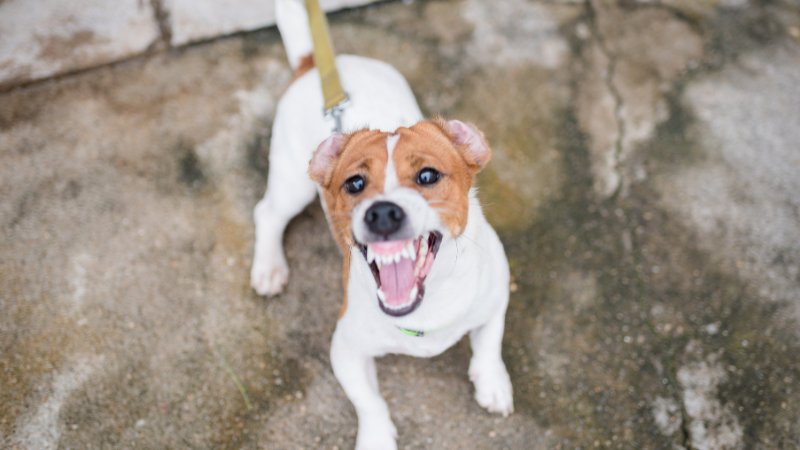
FAQs about How to Train an Aggressive Dog
The following is a list of frequently asked questions and answers about the training of an aggressive dog:
Can Any Dog Be Trained to Overcome Aggression?
Most dogs can, in fact, have their aggressive tendencies mitigated and under control if the proper strategy and training methods are utilized.
It is essential to remember that each dog is an individual, and the development can differ based on the specific dog in question and the factors that led to the aggressiveness in the first place.
Is Aggression in Dogs Solely a Result of Their Breed?
No, a dog’s breed is not the only factor that can indicate whether or not it is aggressive.
Even while some dog breeds are more likely to be aggressive than others, the dog’s environment itself, level of socialization, and experiences that a dog has had in the past all influence its behavior.
It is critical to treat each dog as an individual and avoid making judgments about female dogs based purely on the breed.
Should I Punish My Dog for Aggressive Behavior?
When dealing with aggressive behavior in dogs, it is not advisable to use training methods involving punishment.
Punishment can lead to an increase in aggressive behavior and a breakdown in trust between dog owners, you and your dog.
Instead, focus on methods of positive reinforcement, which aim to reward and encourage peaceful and non-aggressive conduct.

Is It Possible That Medicine Might Aid in Training an Aggressive Dog?
In certain circumstances, medication may be suggested to aid in managing aggressive behavior.
Medication can help reduce anxiety and facilitate changes in behavior. Still, it should be used in conjunction with training and under the direction of a veterinarian or veterinary behaviorist for optimal results.
How Long Does It Take to Train an Aggressive Dog?
The amount of time necessary to teach an aggressive dog can vary significantly based on several factors, such as the dog’s history, temperament, and the regularity of the training.
Because it is a long procedure, patience and persistence are both required throughout, and the recovery process for some dogs may only take a few weeks. In contrast, it may take several months or even longer for others to see significant improvements.
Should I Seek Professional Help for Training an Aggressive Dog?
The training process can be substantially improved by enlisting the assistance of a trained specialist, such as a qualified dog trainer or an animal behaviorist.
These professionals have the expertise and experience to analyze the underlying factors contributing to aggressive behavior, develop a personalized training program for you, and lead you efficiently through the process.
Can Aggressive Behavior in Dogs Be Completely Eliminated?
Although it may not be feasible to eradicate aggressive tendencies in certain dogs, training aims to moderate and decrease aggressive behavior in fearful dogs while encouraging more suitable reactions.
Significant advancements are possible, ultimately resulting in a more adjusted and balanced show dog breed if the appropriate training, consistency, and continued supervision are provided.
Conclusion: How to Train an Aggressive Dog
Training an aggressive dog requires a multifaceted approach that addresses the underlying causes of the dog’s aggression and focuses on modifying behavior.
You can assist your dog in overcoming any more aggressive behaviors or tendencies they may have by developing a well-structured training program, using positive reinforcement, and seeking the assistance of a professional trainer when necessary.
Remember the importance of demonstrating patience, consistency, and compassion throughout the process. Your abrasive dog may still have the potential to develop into a well-mannered and balanced companion with the help of the appropriate training and an atmosphere that is loving.
